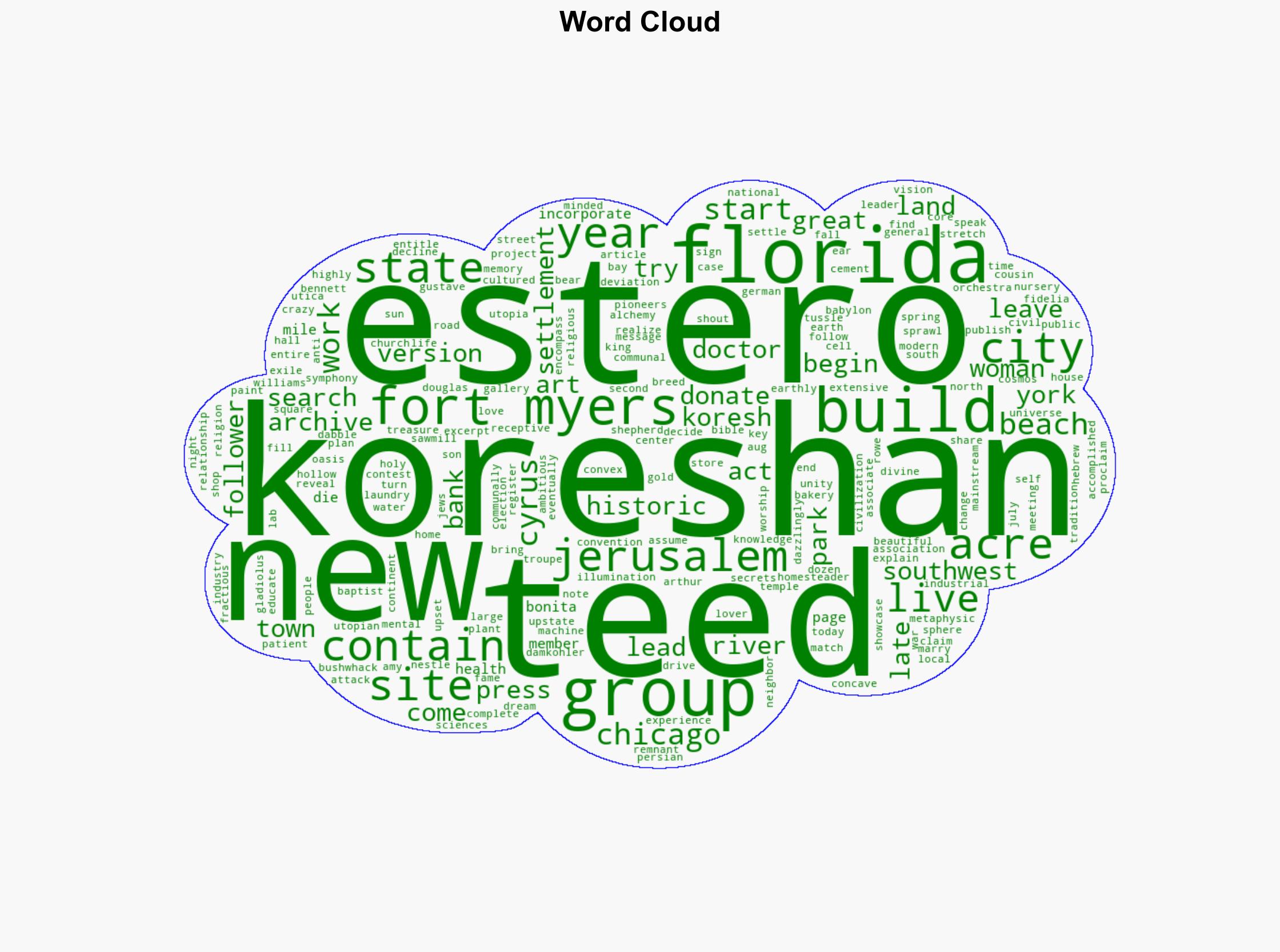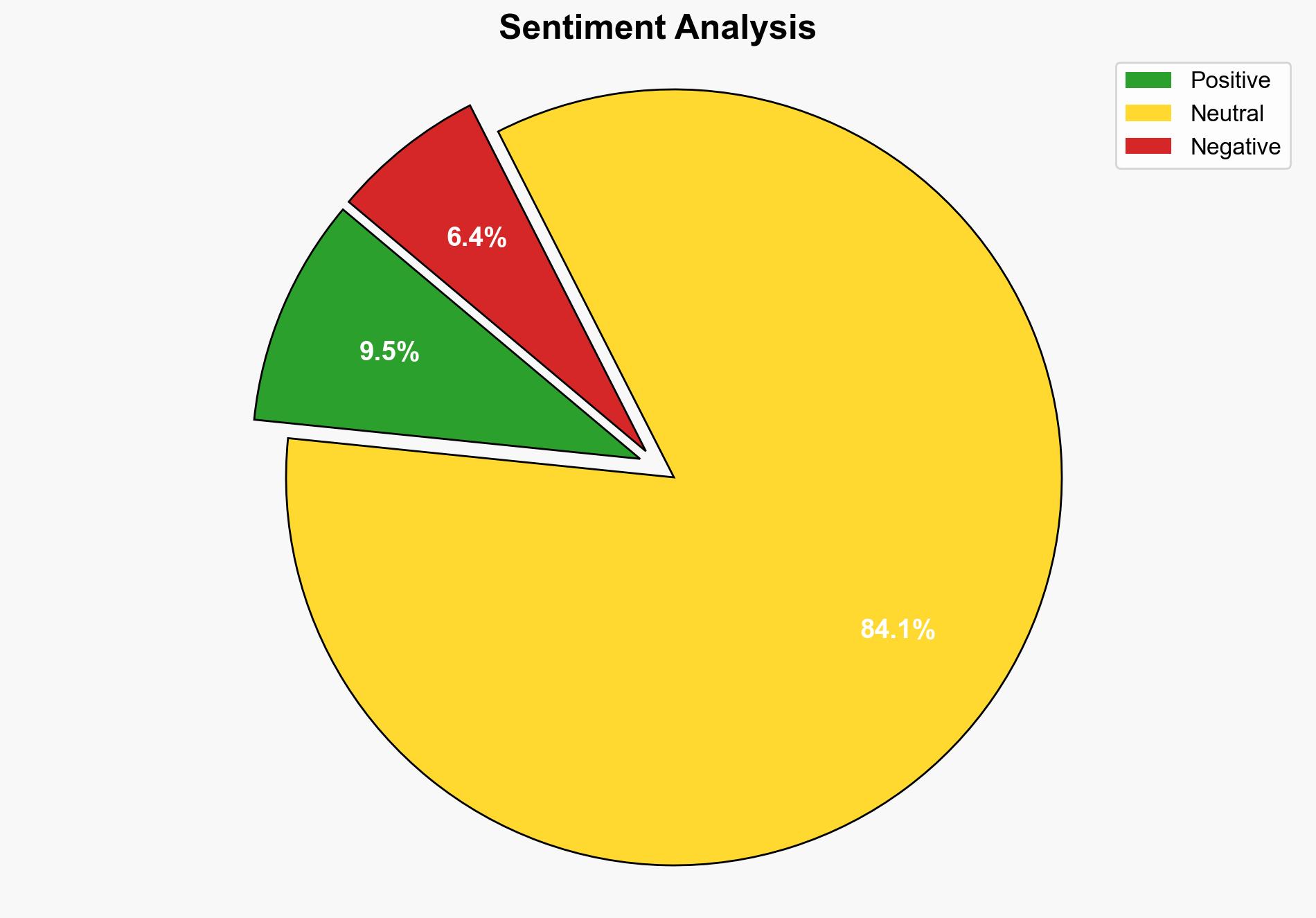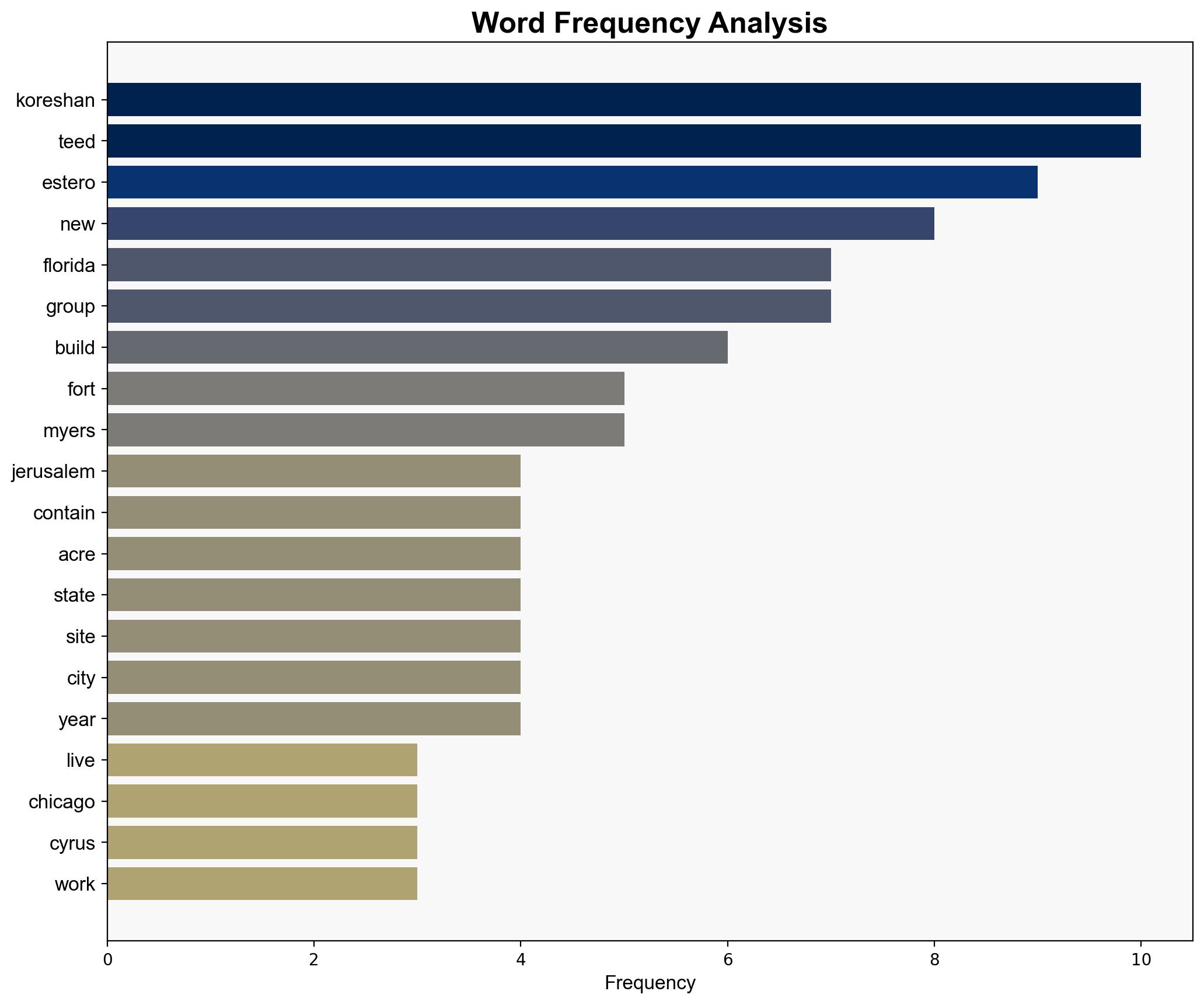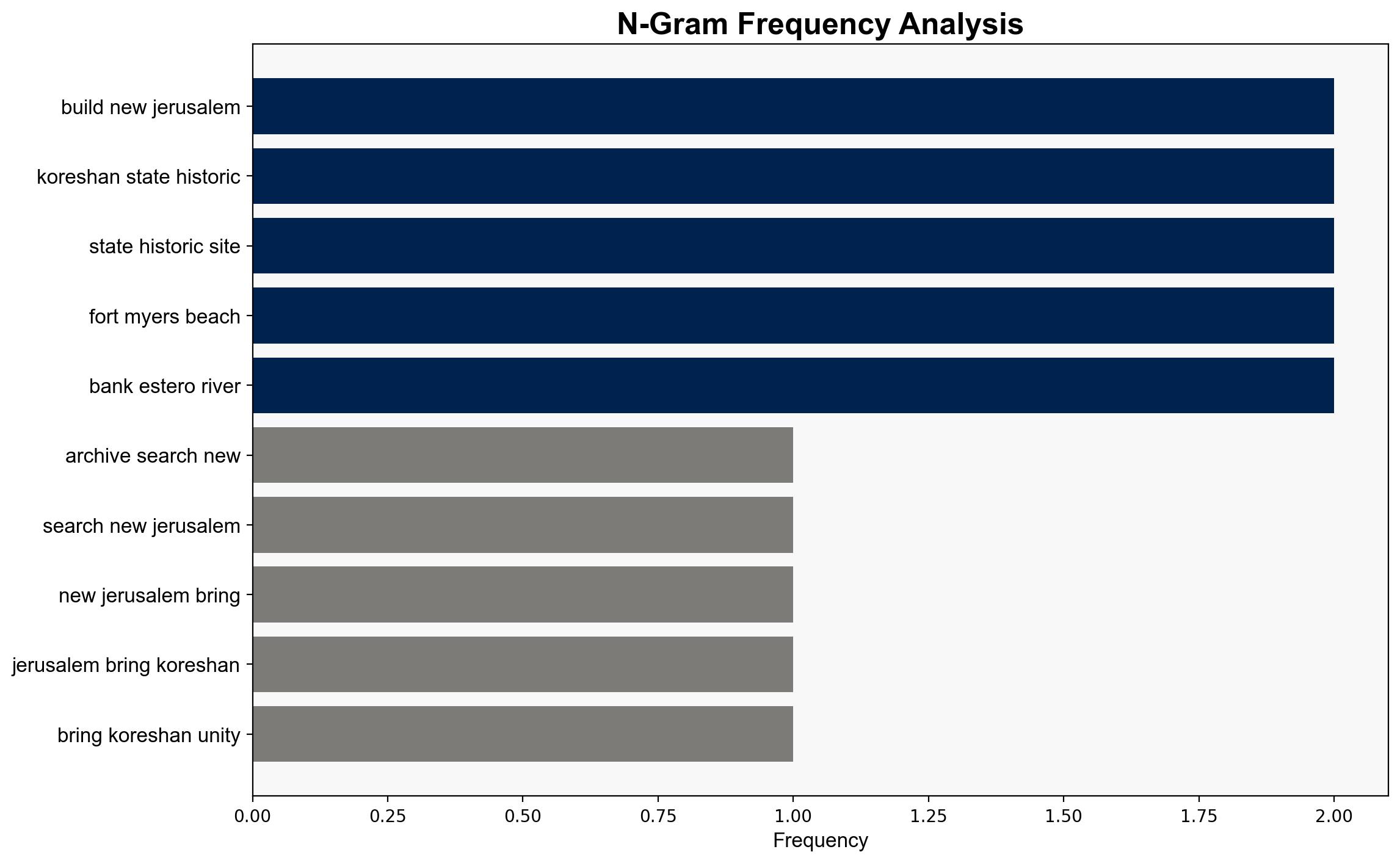From the Archives Search for New Jerusalem brought Koreshan Unity to Southwest Florida – News-Press
Published on: 2025-10-12
Intelligence Report: From the Archives Search for New Jerusalem brought Koreshan Unity to Southwest Florida – News-Press
1. BLUF (Bottom Line Up Front)
The most supported hypothesis is that the Koreshan Unity’s relocation to Southwest Florida was primarily driven by a strategic vision to establish a self-sufficient utopian community, rather than purely religious motivations. Confidence level is moderate due to limited corroborative evidence. Recommended action includes further archival research to clarify the group’s strategic intentions and potential socio-political impacts on the region.
2. Competing Hypotheses
1. **Hypothesis A**: The Koreshan Unity’s move to Southwest Florida was primarily motivated by religious aspirations to create a “New Jerusalem,” aligning with their leader’s vision of a utopian society.
2. **Hypothesis B**: The relocation was driven by a pragmatic strategy to establish a self-sufficient, economically viable community, leveraging the natural resources and isolation of the region to build a sustainable settlement.
Using the Analysis of Competing Hypotheses (ACH) 2.0, Hypothesis B is better supported. The extensive infrastructure development, including industrial and cultural facilities, suggests a focus on economic sustainability and community self-reliance, beyond religious pursuits.
3. Key Assumptions and Red Flags
– **Assumptions**: Both hypotheses assume that the Koreshan Unity’s leadership had a coherent and consistent long-term strategy. Hypothesis A assumes religious motivations were paramount, while Hypothesis B assumes economic and social factors were primary.
– **Red Flags**: The lack of direct evidence from primary sources about the group’s internal deliberations and strategic planning. Potential bias in historical accounts that may romanticize or demonize the group’s intentions.
– **Blind Spots**: Limited information on the group’s interactions with local communities and authorities, which could provide insights into their operational challenges and adaptations.
4. Implications and Strategic Risks
The establishment of a self-sufficient community by the Koreshan Unity in Southwest Florida could serve as a historical case study for modern communal living experiments. Potential risks include socio-political tensions with local populations and authorities, as evidenced by historical conflicts. Understanding these dynamics can inform current strategies for managing similar community developments.
5. Recommendations and Outlook
- Conduct detailed archival research to uncover more about the Koreshan Unity’s strategic planning and decision-making processes.
- Engage with historians and sociologists to analyze the socio-political impacts of the Koreshan settlement on the region.
- Scenario Projections:
- Best Case: The Koreshan Unity’s model provides valuable insights for sustainable community development.
- Worst Case: Historical tensions resurface, affecting current communal initiatives in the region.
- Most Likely: The group’s history becomes a niche academic interest with limited broader impact.
6. Key Individuals and Entities
– Cyrus Teed (Koresh)
– Gustave Damkohler
– Hedwig Michel
7. Thematic Tags
national security threats, cybersecurity, counter-terrorism, regional focus




